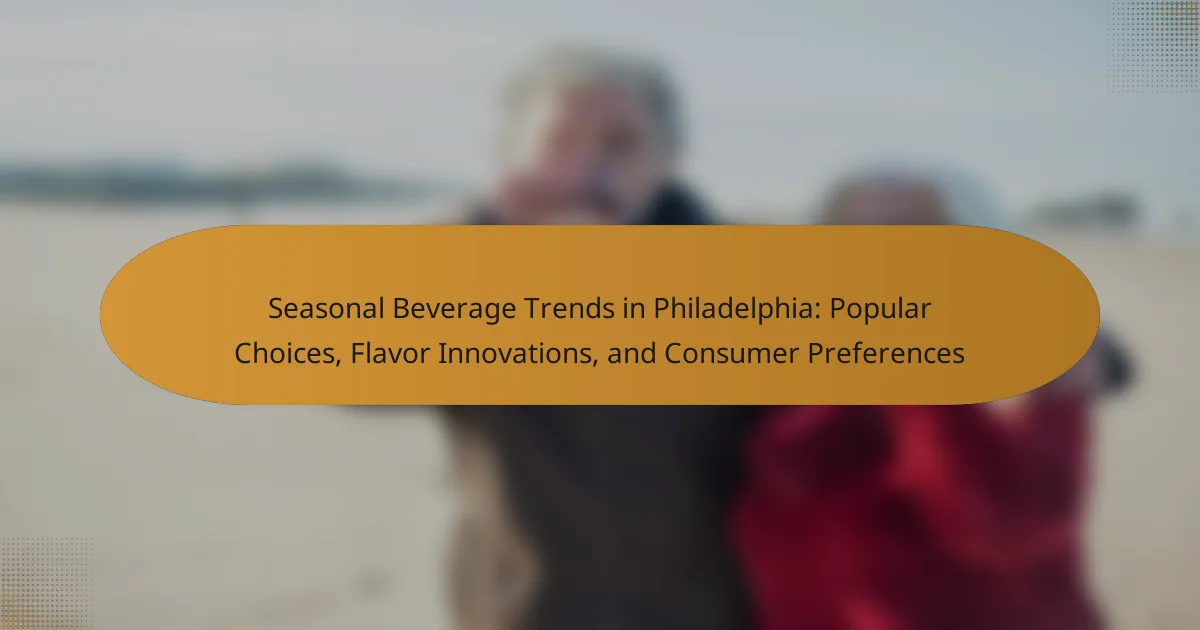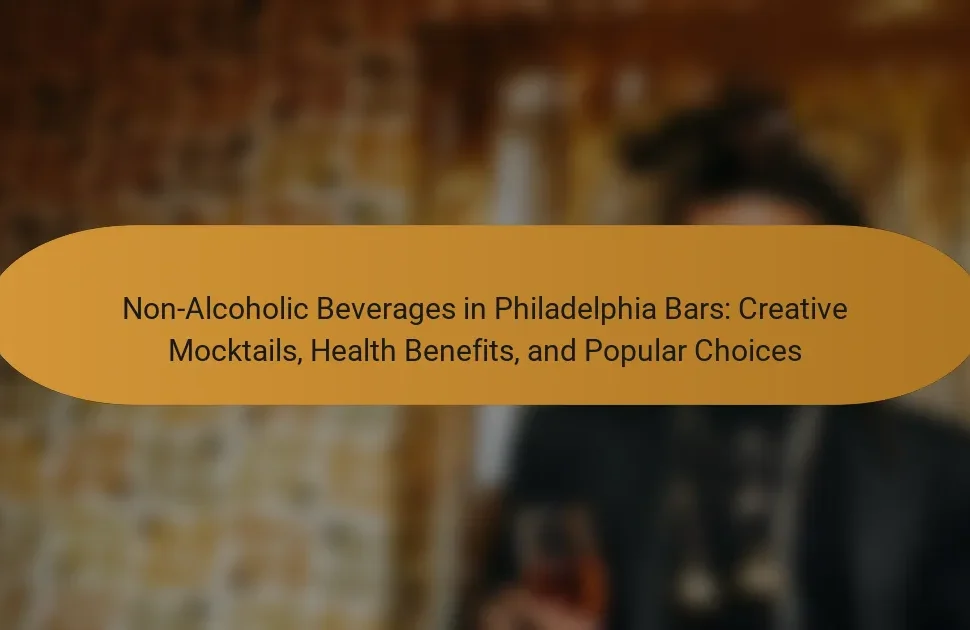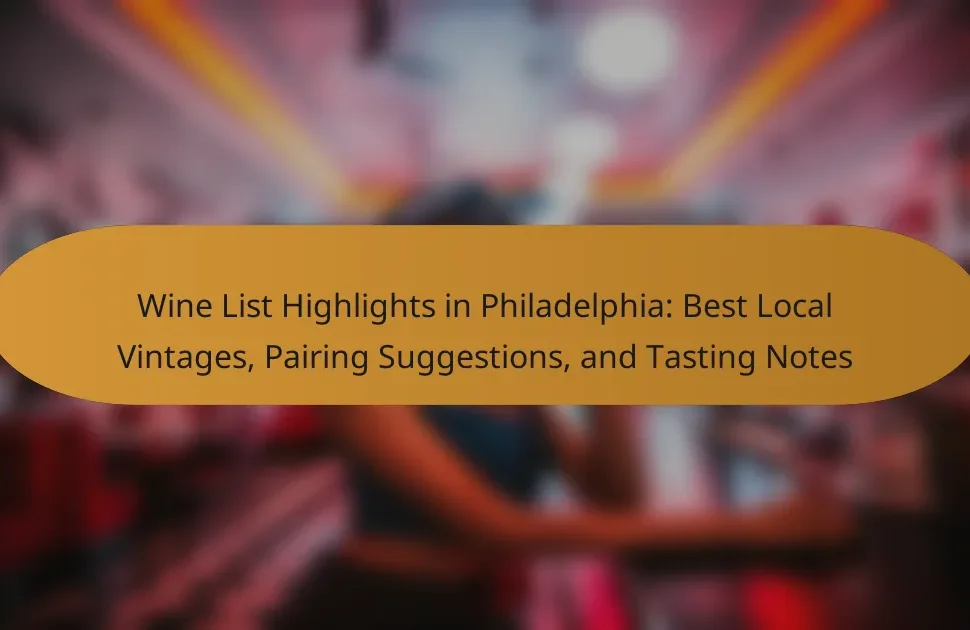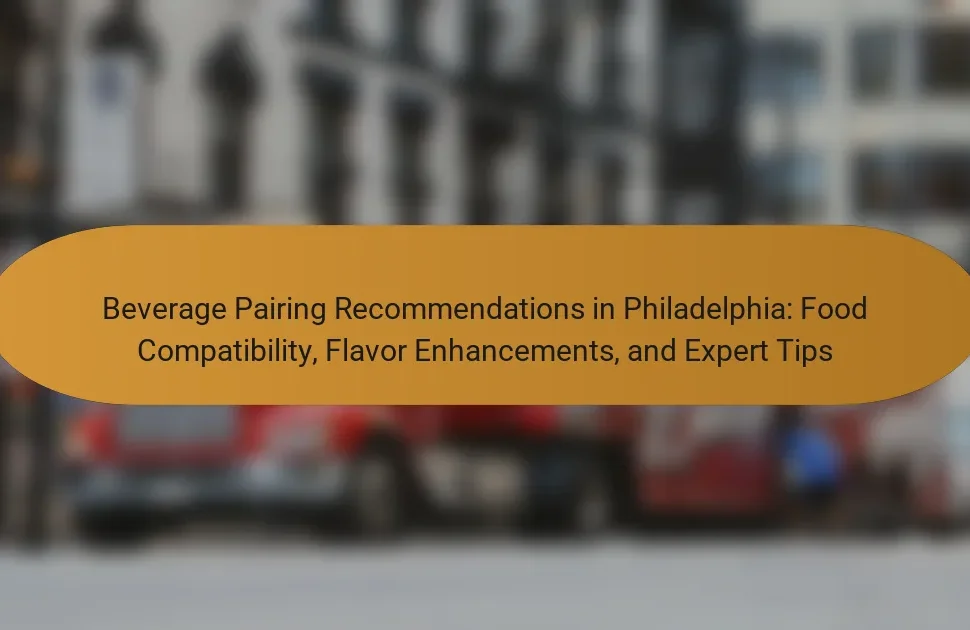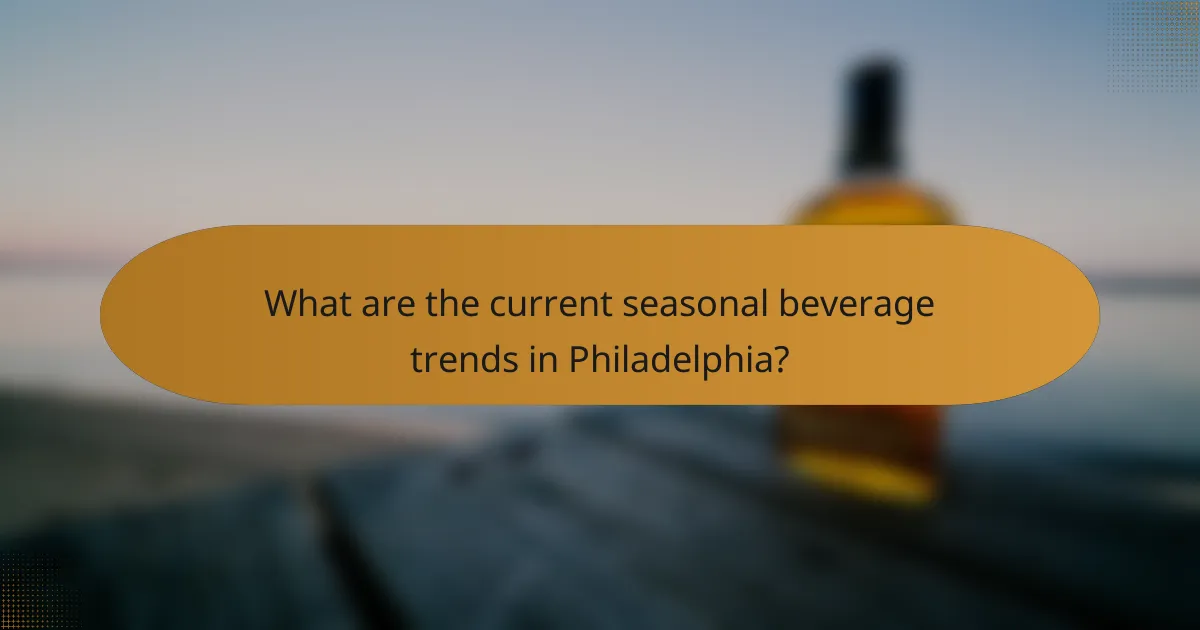
What are the current seasonal beverage trends in Philadelphia?
Current seasonal beverage trends in Philadelphia include a rise in craft cocktails and locally sourced ingredients. Seasonal flavors such as pumpkin spice and apple cider are popular in fall. Cold brew coffee and refreshing iced teas dominate the summer months. Health-conscious options like kombucha and herbal infusions are gaining traction. Many cafes and bars emphasize sustainability in their beverage offerings. The city’s diverse culinary scene influences unique flavor combinations. Events like the Philadelphia Cocktail Week showcase innovative drink creations. These trends reflect consumer preferences for quality and experience in seasonal beverages.
How do seasonal changes influence beverage preferences in Philadelphia?
Seasonal changes significantly influence beverage preferences in Philadelphia. During warmer months, consumers tend to favor refreshing drinks like iced coffee, lemonade, and craft beers. The heat drives the demand for beverages that are light and hydrating. In contrast, colder months see a shift towards hot beverages such as coffee, tea, and spiced ciders. This preference aligns with the need for warmth and comfort during winter. Seasonal festivals and holidays also play a role in shaping these preferences. For example, pumpkin-flavored drinks are popular in fall, while eggnog is favored in winter. Local businesses often adapt their menus to reflect these seasonal trends, enhancing consumer satisfaction.
What specific beverages become popular during different seasons?
Hot beverages like cider and pumpkin spice lattes are popular in autumn. In winter, hot chocolate and eggnog gain popularity. Spring sees a rise in iced teas and fruity cocktails. Summer is known for lemonade and iced coffee. These trends reflect seasonal preferences and climate changes. Seasonal ingredients often influence beverage choices. For example, pumpkin flavors are associated with fall harvests. Refreshing drinks like lemonade are favored during hot summer months.
How do local ingredients affect seasonal beverage choices?
Local ingredients significantly influence seasonal beverage choices by enhancing flavor and promoting sustainability. Seasonal beverages often reflect the availability of fresh, local produce. For example, summer drinks may feature locally sourced berries, while autumn beverages might use regional spices or pumpkin. This not only supports local farmers but also aligns with consumer preferences for freshness. Research shows that 70% of consumers prefer beverages made with local ingredients. This preference drives beverage innovation, as brands experiment with unique local flavors. Ultimately, the use of local ingredients creates a connection between consumers and their community.
What are the most popular seasonal beverages in Philadelphia?
The most popular seasonal beverages in Philadelphia include pumpkin spice lattes, apple cider, and hot chocolate. Pumpkin spice lattes are a staple during the fall months. They are widely available at coffee shops across the city. Apple cider is often enjoyed in both hot and cold forms. It is particularly popular at local orchards and markets during autumn. Hot chocolate becomes a favorite in the winter season. Many cafes offer unique twists on traditional recipes. These beverages reflect local preferences and seasonal flavors. They are frequently featured in promotional events and festivals throughout the year.
Which beverages are favored in the fall season?
In the fall season, popular beverages include pumpkin spice lattes, apple cider, and chai tea. Pumpkin spice lattes are a seasonal favorite, often featuring espresso, steamed milk, and pumpkin flavoring. Apple cider, both hot and cold, is frequently enjoyed for its comforting taste and seasonal spices. Chai tea, with its blend of spices, offers warmth and flavor that resonates with fall. These beverages reflect the seasonal shift and consumer preferences for cozy, spiced flavors during autumn.
What seasonal drinks gain popularity during the winter holidays?
Seasonal drinks that gain popularity during the winter holidays include hot chocolate, eggnog, and mulled wine. Hot chocolate is a classic winter beverage, often made with cocoa powder, milk, and sugar. It is frequently topped with whipped cream or marshmallows. Eggnog is another favorite, typically made with milk, cream, sugar, and eggs, often spiced with nutmeg and served with rum or bourbon. Mulled wine, a warm spiced wine, is made by heating red wine with spices like cinnamon and cloves. These drinks are commonly found in cafes and restaurants during the winter season, reflecting consumer preferences for comforting, festive flavors.
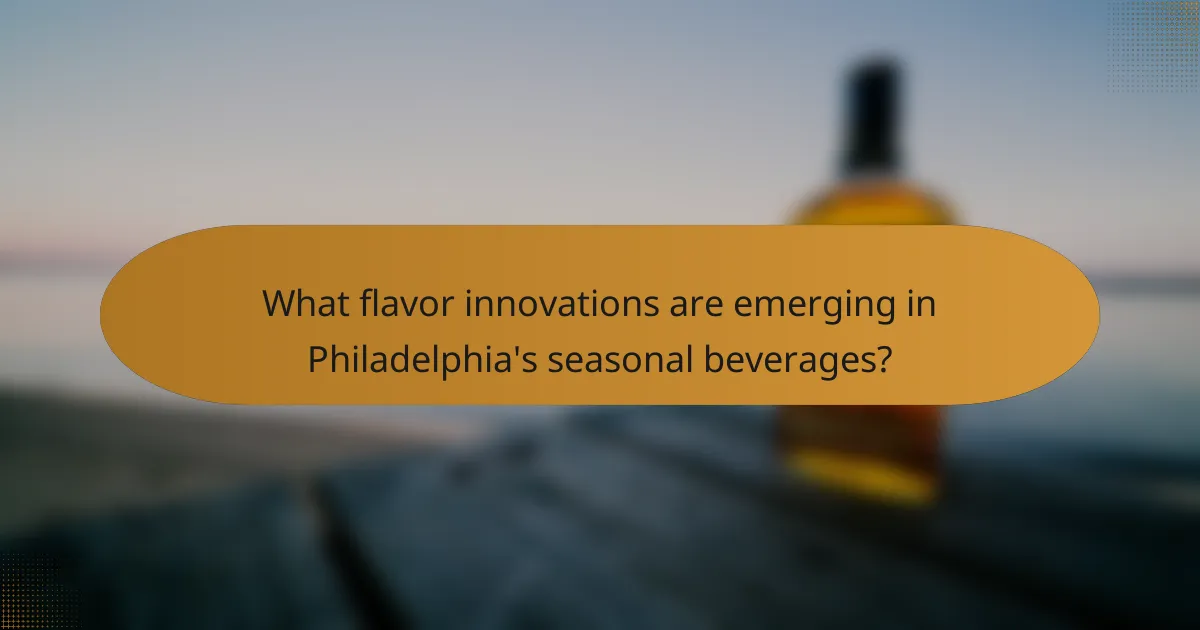
What flavor innovations are emerging in Philadelphia’s seasonal beverages?
Philadelphia’s seasonal beverages are seeing innovative flavors such as spiced pumpkin, apple cinnamon, and maple pecan. These flavors reflect a growing trend towards comfort and nostalgia in drink options. Local cafes and breweries are experimenting with unique combinations. For example, some are incorporating herbs like rosemary and thyme into traditional recipes. Others are blending fruits like cranberry and pomegranate for a refreshing twist. Seasonal craft cocktails are also featuring artisanal syrups and infused spirits. This innovation caters to consumer preferences for unique and memorable experiences. The trend aligns with national movements towards artisanal and locally sourced ingredients.
How are local businesses experimenting with flavors?
Local businesses are experimenting with flavors by incorporating unique ingredients and seasonal produce. They are creating innovative beverages that reflect local tastes and preferences. For instance, some cafes are infusing drinks with herbs like basil and mint. Others are using unexpected fruits such as dragon fruit and passion fruit. This experimentation also includes blending traditional flavors with modern twists. Popular combinations include spicy chai lattes and floral-infused teas. Additionally, businesses are responding to consumer demand for healthier options. They are introducing drinks with reduced sugar and natural sweeteners. This trend reflects a growing interest in artisanal and craft beverages in Philadelphia.
What unique flavor combinations are trending this season?
Unique flavor combinations trending this season include lavender and lemon, as well as spicy mango and chili. These pairings enhance the sensory experience of beverages. Lavender adds floral notes, while lemon provides a refreshing acidity. Spicy mango introduces a sweet and heat contrast, appealing to adventurous palates. Seasonal trends indicate that consumers are seeking innovative flavors. According to a recent survey by the Specialty Coffee Association, 60% of consumers are interested in trying unique flavor combinations in their drinks. This shift reflects a growing demand for creativity in seasonal beverages.
How do flavor innovations reflect consumer preferences?
Flavor innovations reflect consumer preferences by adapting to changing tastes and desires. Consumers increasingly seek unique and diverse flavors in their beverages. This trend is evident in the rise of seasonal flavors that align with cultural events and holidays. For example, pumpkin spice has gained popularity during autumn, indicating a preference for nostalgic and comforting flavors. Additionally, health-conscious consumers drive demand for natural and organic ingredients in flavor innovations. Market research shows that 60% of consumers prefer beverages with fewer artificial additives. Brands that successfully incorporate these preferences tend to see increased sales and customer loyalty. Therefore, flavor innovations serve as a direct response to the evolving interests of consumers.
What role do craft and artisanal beverages play in seasonal trends?
Craft and artisanal beverages significantly influence seasonal trends. These beverages often reflect the flavors and ingredients associated with specific seasons. For instance, breweries and distilleries create pumpkin-flavored beers and spiced ciders in the fall. In winter, unique blends featuring spices and rich flavors are popular. Spring and summer see the rise of refreshing fruit-infused drinks. The local sourcing of ingredients enhances the seasonal appeal. Consumers increasingly seek authentic experiences tied to seasonal changes. This trend is supported by data showing a 25% increase in seasonal craft beverage sales over the past three years. Craft and artisanal beverages, therefore, play a crucial role in shaping consumer preferences throughout the year.
How do craft beverages differ from mainstream options?
Craft beverages differ from mainstream options primarily in their production methods and flavor profiles. Craft beverages are typically produced in smaller batches, allowing for greater attention to detail. This small-scale production often leads to unique flavors and innovative ingredients. Mainstream beverages, in contrast, are mass-produced for consistency and broad appeal.
Craft beverages often emphasize local ingredients and traditional brewing techniques. For example, craft breweries may use locally sourced hops and grains. This focus on locality can enhance the flavor and authenticity of the beverage. Mainstream options usually prioritize cost efficiency and uniformity over distinctiveness.
Consumer preferences are shifting towards craft beverages due to their artisanal qualities. According to the Brewers Association, craft beer sales increased by 4% in 2020, reflecting a growing demand for unique offerings. This trend illustrates the appeal of craft beverages compared to mainstream options.
What are the benefits of choosing artisanal seasonal drinks?
Artisanal seasonal drinks offer several benefits. They use fresh, locally sourced ingredients. This supports local farmers and reduces carbon footprint. Seasonal drinks often feature unique flavors that reflect the time of year. They provide consumers with a sense of connection to the seasons. Artisanal preparation methods enhance the quality and taste. These drinks are typically crafted with care, ensuring a superior experience. Additionally, they often avoid artificial additives, promoting healthier choices. Overall, choosing artisanal seasonal drinks enhances both taste and sustainability.
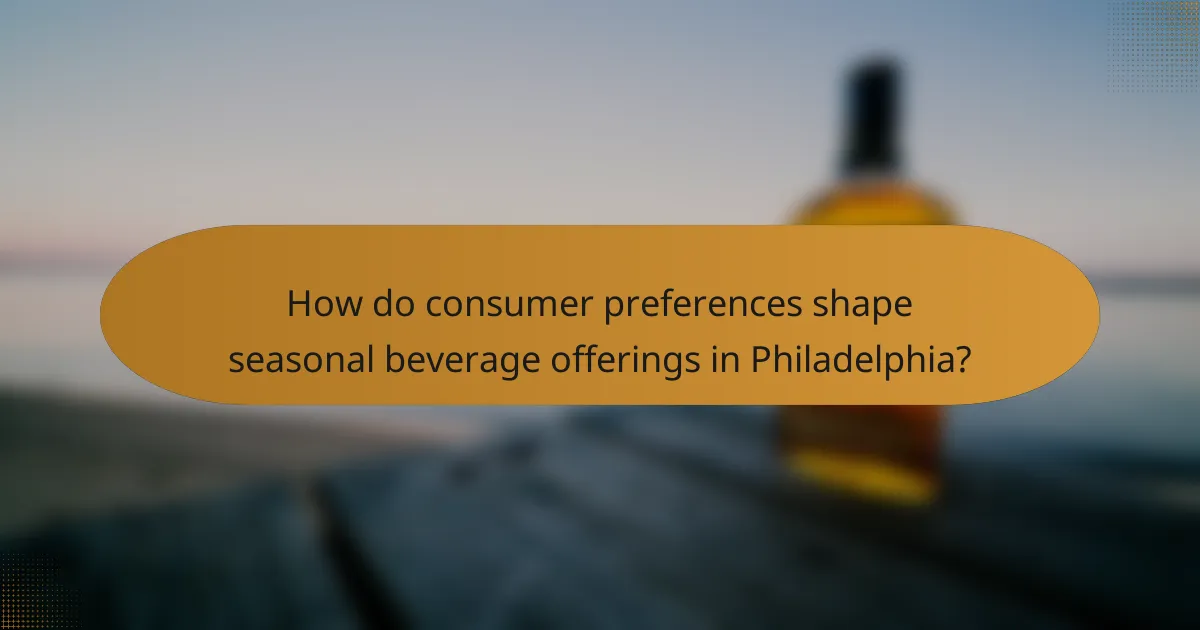
How do consumer preferences shape seasonal beverage offerings in Philadelphia?
Consumer preferences significantly influence seasonal beverage offerings in Philadelphia. Local demand shapes the types of beverages available during different seasons. For example, cold brews and fruity cocktails are popular in summer. In contrast, warm beverages like spiced cider and hot chocolate gain traction in winter.
Market research shows that consumers increasingly seek unique flavors and local ingredients. This trend encourages businesses to innovate and diversify their seasonal menus. According to a 2022 survey by the Philadelphia Beverage Association, 65% of consumers prefer beverages that reflect local culture and seasonal ingredients.
Additionally, social media plays a key role in shaping preferences. Seasonal beverage trends often emerge from Instagram and TikTok, where visually appealing drinks gain popularity. This digital influence prompts local businesses to create visually striking offerings that cater to consumer desires.
What factors influence consumer choices for seasonal beverages?
Consumer choices for seasonal beverages are influenced by various factors. Seasonal availability significantly impacts consumer decisions. Consumers often prefer beverages that align with specific seasons, such as pumpkin spice in fall or iced drinks in summer. Flavor profiles also play a crucial role. Unique and innovative flavors can attract consumers looking for novelty. Marketing and promotions are essential as well. Effective advertising can create excitement and drive sales. Social media trends influence choices too. Consumers often seek beverages that are popular among peers or featured online. Additionally, health considerations are increasingly important. Many consumers opt for beverages that align with their dietary preferences or health goals. Price sensitivity can also affect decisions. Competitive pricing can sway consumers towards specific brands or products.
How do health trends impact beverage selections?
Health trends significantly influence beverage selections by driving consumer preferences towards healthier options. As awareness of nutrition increases, people seek beverages low in sugar and calories. This shift has led to a rise in demand for drinks made with natural ingredients. Beverages like cold-pressed juices and herbal teas are gaining popularity. Consumers are also gravitating towards functional drinks that offer health benefits, such as probiotics and antioxidants. A report by the Beverage Marketing Corporation indicates that health-conscious consumers are willing to pay more for premium, health-oriented beverages. This trend reflects a broader movement towards wellness and preventive health measures in society.
What demographic factors affect beverage preferences?
Demographic factors significantly affect beverage preferences. Age influences choices; younger consumers often prefer energy drinks and flavored beverages. In contrast, older adults tend to favor traditional options like coffee and tea. Gender also plays a role; studies show women are more likely to choose low-calorie or health-oriented drinks. Income levels impact preferences as well; higher-income individuals may opt for premium brands or organic options. Additionally, cultural background shapes beverage choices, with ethnic communities often gravitating towards traditional drinks. Geographic location affects preferences too; urban dwellers might lean towards craft beverages, while rural consumers may prefer classic options. These factors combine to create diverse beverage trends.
What are the emerging consumer behaviors regarding seasonal beverages?
Emerging consumer behaviors regarding seasonal beverages show a growing preference for unique flavors and experiences. Consumers increasingly seek limited-time offerings that create a sense of urgency. Seasonal beverages are also becoming a way for brands to connect with local culture and traditions. Social media plays a significant role in influencing consumer choices, with visually appealing drinks gaining traction. Additionally, there is a rising demand for healthier options, leading brands to innovate with natural ingredients. Sustainability concerns are prompting consumers to favor eco-friendly packaging. Data from market research indicates a 15% increase in seasonal beverage sales over the past year. This trend reflects a shift towards experiential consumption among younger demographics.
How has social media influenced seasonal beverage trends?
Social media has significantly influenced seasonal beverage trends by amplifying consumer awareness and preferences. Platforms like Instagram and TikTok showcase visually appealing drinks, driving demand for seasonal flavors. Seasonal beverages often go viral, leading to increased sales for brands. For instance, the popularity of pumpkin spice lattes surged due to social media promotion each fall. Additionally, user-generated content encourages brands to innovate and adapt to consumer feedback. This interaction fosters a community around seasonal beverages, enhancing brand loyalty. Social media analytics help brands identify trending flavors and adjust their offerings accordingly.
What are the common purchasing patterns for seasonal drinks?
Common purchasing patterns for seasonal drinks include increased sales during specific holidays and events. Consumers often seek out limited-time offerings that align with seasonal flavors. For instance, pumpkin spice lattes surge in popularity during fall. In contrast, refreshing iced beverages see higher sales in summer months. Seasonal promotions and marketing campaigns significantly influence consumer choices. Research shows that 60% of consumers are more likely to purchase a drink if it is marketed as seasonal. Additionally, social media trends play a crucial role in driving seasonal drink sales. Consumers often share their seasonal beverage experiences online, further boosting interest and purchases.
What tips can consumers follow when exploring seasonal beverages in Philadelphia?
Consumers exploring seasonal beverages in Philadelphia should start by researching local establishments known for their seasonal offerings. Popular venues often feature unique drinks that reflect the season. Checking social media and local food blogs can provide insights into trending beverages. Visiting farmers’ markets can also yield fresh, seasonal ingredients used in drinks. Attending local festivals or events can expose consumers to limited-time beverages. Asking baristas or staff for recommendations enhances the experience. Lastly, keeping an open mind to try new flavors can lead to delightful discoveries.
Seasonal Beverage Trends in Philadelphia encompass popular choices, flavor innovations, and consumer preferences influenced by local ingredients and seasonal changes. Key trends include the rise of craft cocktails, health-conscious options, and unique flavor combinations such as pumpkin spice and apple cider in fall, while summer favors cold brews and iced teas. Local businesses are adapting their offerings based on consumer demand for freshness and sustainability, reflecting a growing interest in artisanal beverages. Additionally, social media plays a significant role in shaping these trends, driving consumer awareness and purchasing patterns throughout the year.
